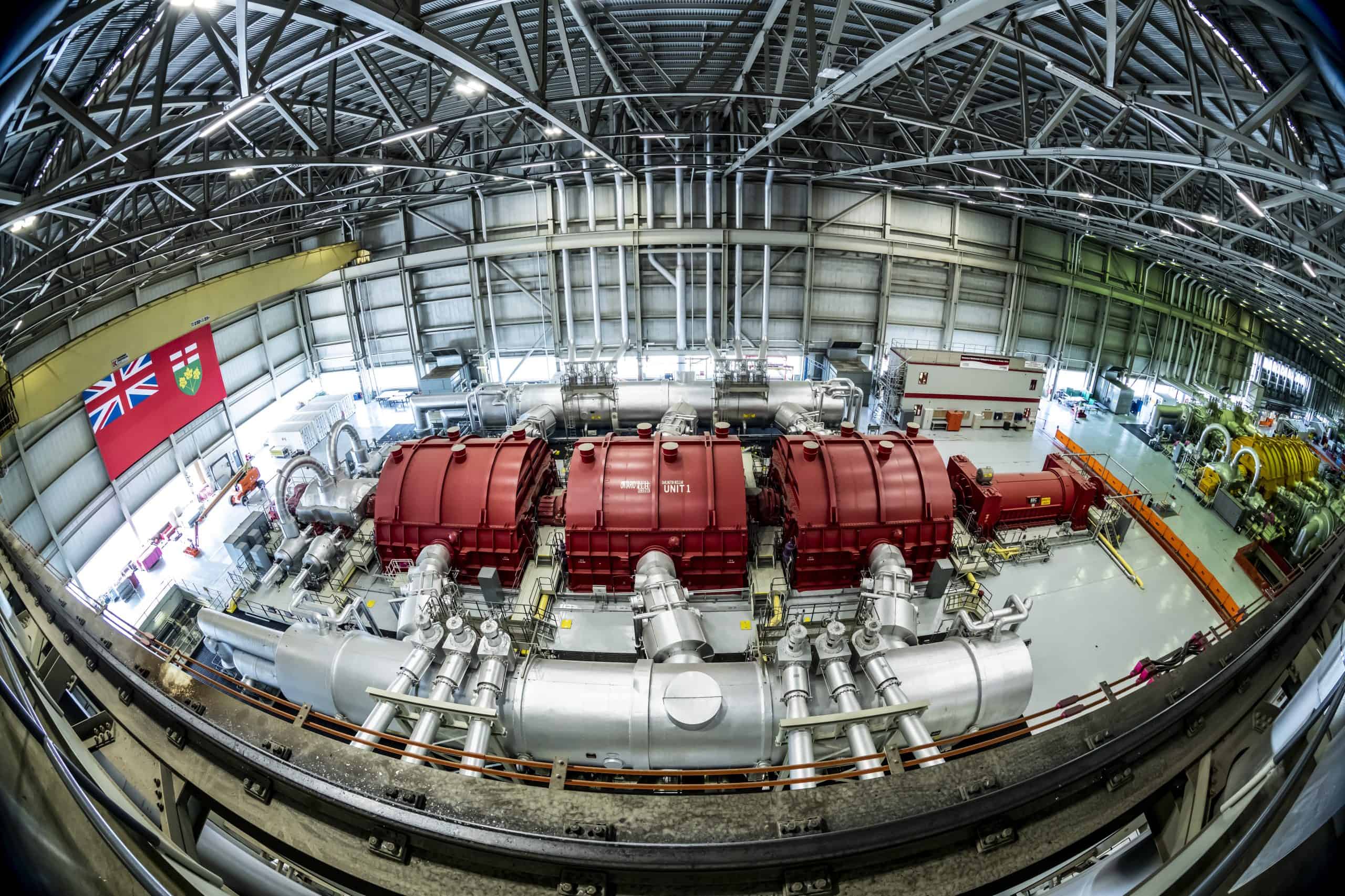Province says Clarington nuclear, Hamilton green steel to stem the rising demand for electricity
Published July 10, 2023 at 3:26 pm

The Ontario government has released its plan to meet the increasing demand for electricity, with new nuclear and the new planned procurement of green power, including wind, solar, hydroelectric and biogas, at the top of the list.
Ontario Energy Minister Todd Smith was in Windsor Monday to release Powering Ontario’s Growth, outlining the strategy the Province is taking to meet the demand for power driven by strong economic growth and electrification through the 2030s and 2040s.
Ontario’s electricity demand is on the rise for the first time since 2005, especially from electric vehicles and the battery plants needed to power them, with recent major investments from Stellantis, Volkswagen and Umicore, and the Independent Electricity System Operator has said that Ontario’s electricity demand could double by mid-century.
The plans to build new nuclear and contract more electricity generation from non-emitting sources are part of a strategy by the Ontario government to prepare the system for 2030 to 2050, Smith noted.
Smith, who was in Bowmanville Friday to announce three new small modular reactors for the Darlington nuclear plant (two days after making a splash at the Bruce plant on the shores of Lake Huron, where the Province will build the first large-scale new nuclear facility in 30 years), said the green power will “pair well” with recent energy storage procurements, so that power generated by solar panels, for example, can be stored and injected into the system when needed.
“Our government’s open for business approach has resulted in unprecedented investments and job creation, from electric vehicles and battery manufacturing to critical minerals to green steel,” said Smith. “Powering Ontario’s Growth lays out the province’s plan to build the clean electricity generation, storage, and transmission we need to power the next major international investment, the new homes we are building, and industries as they grow and electrify.”
The new nuclear projects announced last week, which will produce enough to light up six million homes, will help Ontario end its reliance on natural gas to generate electricity, he added.
Smith wasn’t prepared to fully commit to a moratorium on natural gas by 2027 and the elimination of the carbon-producing energy source by 2050, instead putting the onus on the federal government to expedite approvals for the new nuclear projects first.
Critics, however, say Ontario wouldn’t be in as much of an electricity supply crunch if the provincial government hadn’t cancelled 750 green energy contracts during its first term.
The province is also working with the steel industry to end coal use and electrify their operations to support the production of green steel in Hamilton and Sault Ste. Marie. These investments alone will increase electricity demand in the province by eight terawatt hours, the equivalent of nearly tripling the energy use of Durham Region every year.
Their action plan outlines the actions the province is taking to meet electricity demand over the long-term, including:
- Nuclear Energy – pre-development work at Bruce Power and three new SMRs at Darlington
- Competitive Procurements – Starting to plan for the next long-term competitive procurement of non-emitting electricity resources including wind, solar, hydroelectric, batteries and biogas
- New Transmission Infrastructure – Designating and prioritizing three new transmission lines that will power Algoma Steel and job creators in Northern Ontario, and one new transmission line to power growth in the Ottawa region and across Eastern Ontario.
- Hydroelectric Power – Asking OPG to optimize hydroelectric generation from current sites and working with IESO to assess two proposed pumped hydroelectric storage projects in Marmora and Meaford to improve grid efficiency
- Keeping Costs Down – Starting planning for the future of energy efficiency programming in Ontario to help reduce demand and supporting the deployment of distributed energy resources (DER) such as rooftop solar and the EV batteries
- Planning for Future Transmission – Directing IESO to report back to the Minister with transmission options to address system bottlenecks between Toronto and northern Ontario, and into downtown Toronto, to enable growth
These initiatives, according to Queen’s Park, will provide a “diverse supply mix,” positioning Ontario to support electrification and energy affordability while competing for international investments which are looking for jurisdictions that provide access to clean, reliable electricity.
“While we may not need to start building today, government and those in the energy sector need to start planning immediately, so we have new clean, zero-emissions projects ready to go when we need them,” Smith said at the Windsor press conference.
Economic Development, Job Creation and Trade Minister Vic Fedeli said the province’s recent investments means that Ontario can “build on that success” and continue to attract major investments.
“As our province moves toward an electric future with a strong end-to-end EV supply chain, there has never been a greater need for clean, affordable energy that companies can rely on. This plan brings us one step closer to being a world-leading energy powerhouse.”
With files from Canadian Press

Hamilton is moving to ‘green’ (no coal used) steel production





